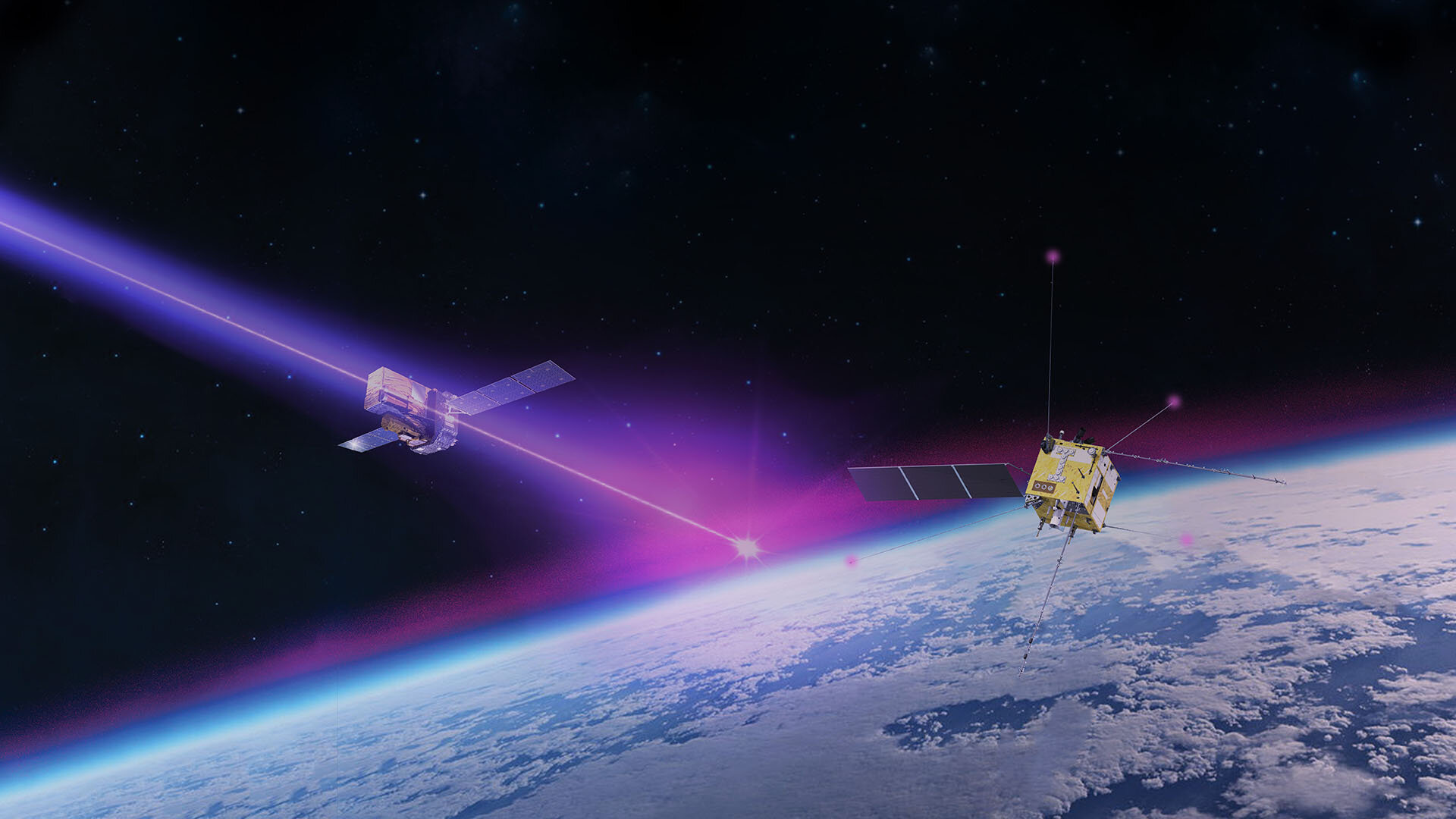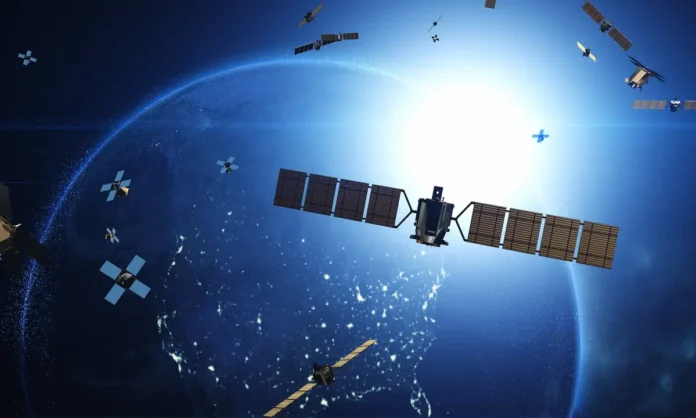In an unsettling reminder of the hazards lurking in space, a satellite orbiting Earth was recently struck by an unidentified object, leaving a visible hole in its structure. This event has sent ripples of concern through the space and scientific communities, sparking discussions on the increasing threat of space debris and the need for better monitoring and protection for the countless satellites that we depend on every day.
With the proliferation of satellites in Earth’s orbit, from communications and GPS satellites to those conducting scientific research, the risk of collisions has grown exponentially. This recent incident underscores the need for urgent action to protect these crucial assets from the hazards of space.
The Satellite Strike: What We Know So Far?
The satellite, part of a constellation used for telecommunications, suffered a sudden impact while orbiting Earth. Engineers working with the satellite noticed an unusual signal disruption, prompting an investigation. A closer inspection using ground-based tracking technology revealed a small hole punctured through the satellite’s outer structure, an unmistakable sign that it had been hit by an object.
Experts believe that the object could be a small piece of space debris or even a micrometeoroid. At speeds exceeding thousands of kilometers per hour, even a tiny particle can cause significant damage to a satellite, as in this case. However, the exact nature and origin of the object remain unknown, leaving scientists puzzled and concerned about the vulnerabilities faced by orbital assets.

The Growing Threat of Space Debris in Earth’s Orbit
Space debris has become one of the most pressing issues for both space agencies and private companies operating in orbit. Earth’s orbit is home to millions of pieces of debris, ranging from abandoned satellite fragments and rocket parts to non-functional satellites. Even tiny fragments, the size of a pebble, can have catastrophic consequences when traveling at high speeds in space.
The collision threat is particularly concerning in low Earth orbit (LEO), a region heavily populated by satellites. The debris is not just a risk to individual satellites but also poses a chain-reaction threat in what is known as the “Kessler Syndrome.” This theory suggests that a single collision could produce more debris, triggering further collisions and potentially rendering certain parts of space unusable for years.
With more nations and private companies launching satellites and even planning manned missions, the issue of space debris has become critical. Each new launch increases the number of objects in space, raising the likelihood of collisions and damaging impacts.
Potential Impacts on Satellite Operations and Earth-Based Services
A damaged satellite can have far-reaching effects beyond space. Satellites play a vital role in modern infrastructure, from enabling GPS and communication to providing crucial data for weather forecasting, scientific research, and military operations. When a satellite is disabled, the services it provides are disrupted, potentially impacting millions of users on Earth.
In the event of a serious collision, organizations operating these satellites face financial losses as well. The cost of launching and maintaining a satellite is significant, and repair options are extremely limited once a satellite is in orbit. Some companies might resort to launching replacement satellites, but this adds to the crowding problem in Earth’s orbit and increases the likelihood of further incidents.
This recent incident also calls attention to the risk to human space exploration. The International Space Station (ISS) and other manned missions could face similar threats from space debris, placing astronauts’ lives in jeopardy.

Addressing the Challenge: Current and Future Efforts to Tackle Space Debris
Space agencies, including NASA, the European Space Agency (ESA), and private firms like SpaceX, have recognized the urgency of managing space debris. Efforts are underway to track existing debris and devise solutions to mitigate the risk.
1. Tracking and Monitoring Systems:
Organizations have developed tracking systems to monitor known debris, predicting potential collision courses and warning satellite operators of imminent risks. Using radar and telescope data, agencies are able to track thousands of larger pieces of debris in space, but smaller fragments remain difficult to detect.
2. Debris Removal Missions:
Innovative debris-removal missions are in development to capture and dispose of space debris. These include robotic arms, harpoons, and nets designed to capture stray debris and direct it back into Earth’s atmosphere to burn up upon reentry. ESA’s ClearSpace-1 mission, slated for the coming years, aims to be one of the first large-scale debris removal operations.
3. Spacecraft Shielding and Redundancy:
Spacecraft designers are incorporating shielding to protect satellites from small debris, as well as creating redundant systems that allow satellites to continue functioning even if certain components are damaged.
4. International Regulations and Policies:
International organizations and regulatory bodies are collaborating to create policies that minimize the risk of debris generation. This includes regulations on the deorbiting of satellites at the end of their operational life, as well as safe disposal practices for defunct space equipment.
While these measures are steps in the right direction, experts agree that a more coordinated global approach is needed to address the scale of the problem effectively.
Lessons from the Satellite Strike: Preparing for the Future
This recent incident has highlighted the fragility of our space infrastructure and the risks that come with an increasingly crowded orbit. As more companies and countries continue to deploy satellites, proactive measures will be essential to avoid scenarios where critical satellites are disabled by debris or natural micrometeoroid impacts.
Space technology firms and national agencies are also being encouraged to consider “space sustainability” — strategies to minimize debris creation and responsibly manage orbital traffic. Space sustainability involves designing missions that account for long-term environmental impacts and prioritizing debris prevention as a key aspect of future space operations.

The Role of Public Awareness and International Collaboration
With space exploration gaining more attention and becoming a shared interest among nations, public awareness is crucial in supporting policies for sustainable space use. Collaborative international efforts could ensure that future missions and launches follow guidelines to mitigate risks, keeping space accessible and safe for exploration and commerce.
A Wake-Up Call for Safer Space Operations
The striking of this satellite serves as a stark reminder of the hidden perils that satellites and space missions face daily. This incident underscores the importance of space debris management, not just to protect technological assets but also to safeguard human space exploration.
In the years to come, addressing space debris and finding ways to safely operate in Earth’s orbit will be central to space sustainability. With advancements in technology and a collective commitment to responsible space practices, humanity can continue to explore and benefit from space without leaving a trail of hazards in our orbit. The lessons from this impact serve as both a warning and an opportunity to enhance our capabilities, ensuring that space remains a resource for all.

